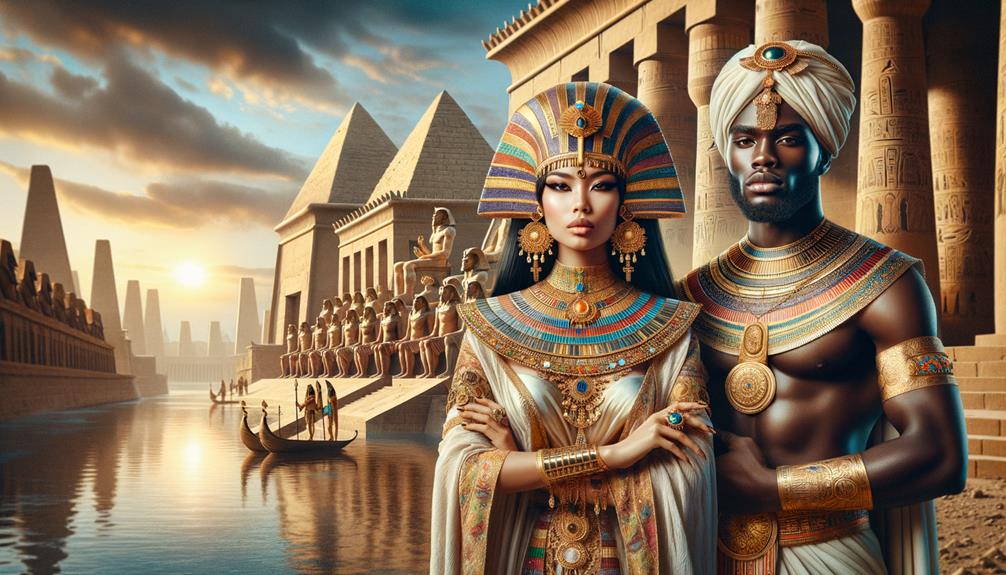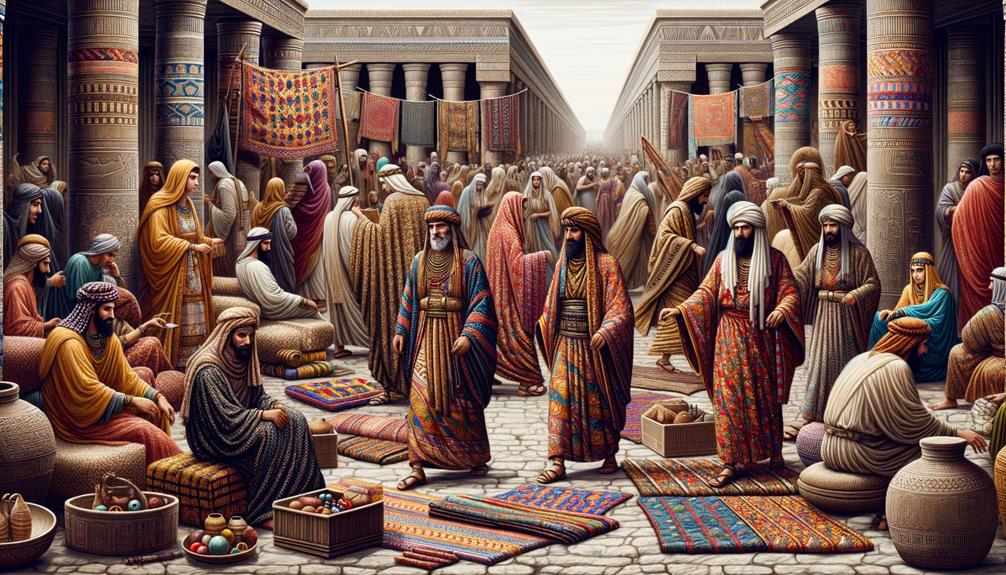Ancient Greek athletes did indeed compete almost entirely nude, and researching this reveals the importance of minimalistic attire for these early competitors. Simple garments like the chiton or himation, made from linen and wool, allowed for maximum freedom of movement. Leather sandals provided necessary support, while olive oil was used for protection and to accentuate physical form. This blend of functionality and aesthetic appeal says a lot about their culture, but there's a deeper connection to societal values and the human spirit worth exploring.
Overview of Ancient Greek Athletic Wear
Exploring ancient Greek athletic wear reveals a fascinating world where minimalistic clothing and natural fibers catered to both functionality and aesthetic values. In ancient Greece, athletes often trained and competed naked, emphasizing the cultural emphasis on physical prowess and beauty. The olive oil they used to cover their bodies not only enhanced their appearance but also protected their skin and muscles during strenuous activities.
While most athletic events featured nudity, some garments did play a role. The chiton and himation, typically made of linen or wool, were occasionally worn, especially outside the competitive arena. Footwear like leather sandals and the cothurnus provided necessary protection and support, demonstrating that even in ancient times, proper gear mattered.
Accessories like fibulae, belts, and pins added a decorative touch, balancing functionality with a sense of style. These items, though simple, were carefully designed to allow freedom of movement and comfort, essential for various physical activities. This thoughtful blend of practicality and aesthetics in ancient Greek athletic wear showcases a timeless principle: innovation lies in enhancing human performance while honoring the body's natural form.
Materials and Fabrics Used
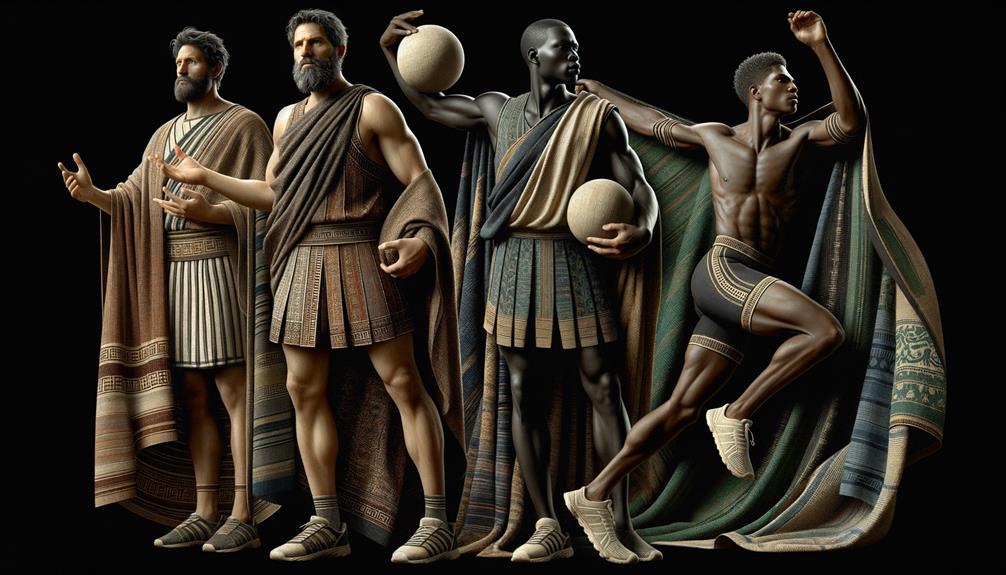
In ancient Greece, the choice of materials for athletic wear reflected the society's values and environment. Linen was the top pick for its breathability in the warm climate, keeping athletes cool and comfortable under the scorching Mediterranean sun.
Wool, on the other hand, was favored for its insulating properties, providing warmth during colder seasons. The ancient Greeks showed remarkable resourcefulness by balancing their needs with available resources. Silk, though rare, was reserved for special occasions, adding a touch of luxury. This fabric, derived from caterpillar cocoons, symbolized status and grandeur.
Women, primarily responsible for textile production, used upright warp-weighted looms and loom weights to create these fabrics. The craftsmanship involved was truly an art form, resulting in colorful and intricate designs. The hues of Greek athletic wear were vibrant, featuring black, red, yellow, blue, and green.
These colors were often embellished with intricate embroidery depicting floral patterns, geometric designs, and scenes from Greek mythology, reflecting the culture's deep appreciation for aesthetics and storytelling. The materials and fabrics used in ancient Greek athletic wear were not just functional; they were a reflection of the society's values and environment.
Common Garments and Their Features
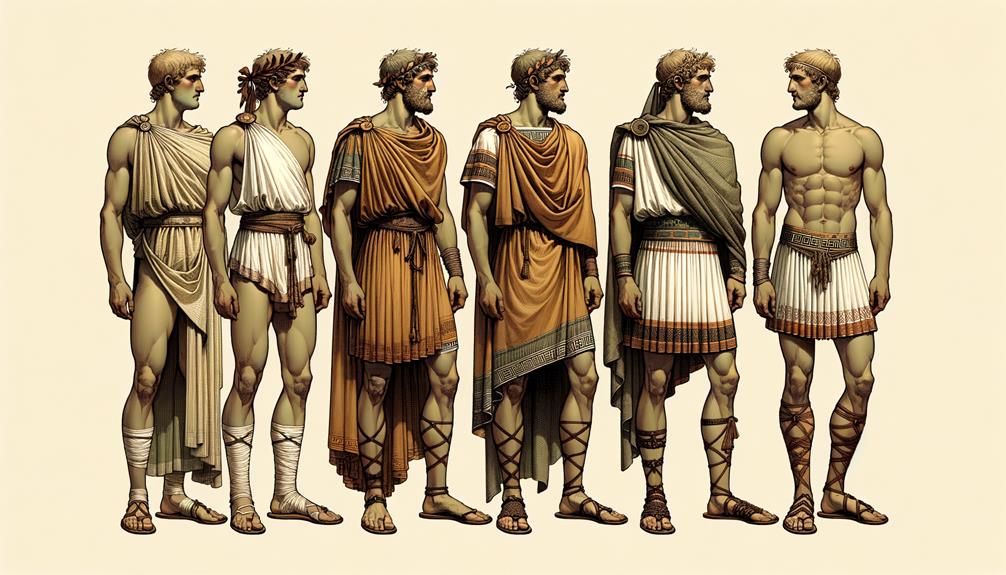
When examining ancient Greek athletic wear, we find that the chiton was a staple for many athletes. This light linen garment with sleeves and a long hemline allowed for maximum movement and comfort. Men, on the other hand, often opted for the chlamys, a seamless woolen rectangle that doubled as a cloak and was especially favored for its durability during both military and athletic pursuits.
Unmarried women engaged in athletic activities wore variations of the peplos, an elegant, draped garment fastened with brooches at the shoulders that could be adjusted for a snug fit, offering both functionality and a touch of elegance. The intricacies of these garments didn't stop there; specific terms described various types of outer clothing and mantles that completed the ensemble.
Accessories played a vital role in securing these garments. Belts, sashes, buttons, pins, and fibulae were carefully chosen to ensure that the attire remained in place during rigorous activity. These elements not only served a practical purpose but also added a personal touch to the athlete's outfit.
Influence on Modern Athletic Apparel
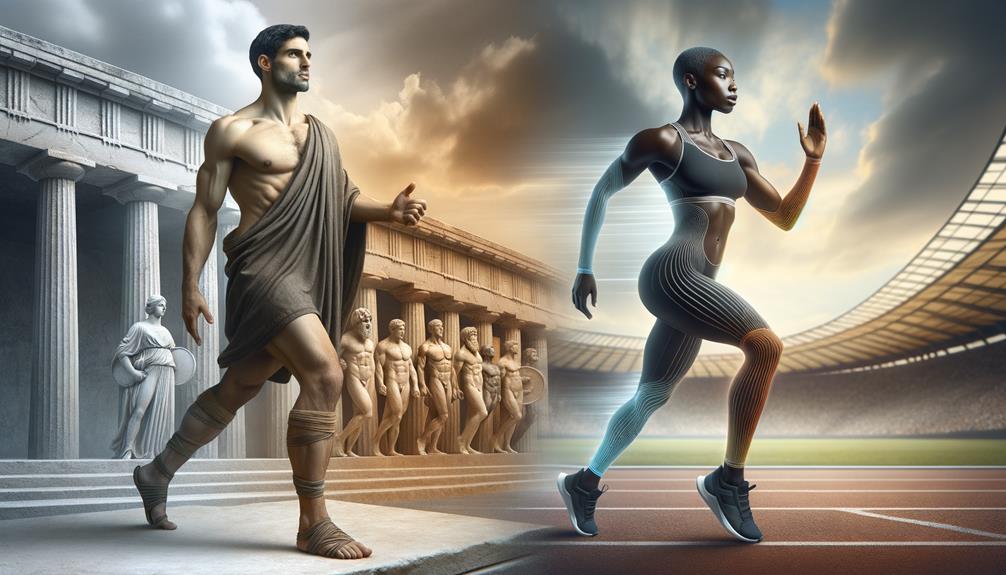
Exploring the connection between ancient Greece and modern activewear, it's clear that the minimalist and functional designs of ancient Greek athletic wear have had a profound influence on contemporary sportswear. The ancient Greeks' focus on performance and freedom of movement remains a cornerstone in modern athletic apparel.
Modern activewear often incorporates elements reminiscent of Greek attire. Natural fibers like linen and wool, once staples for Greek athletes, have evolved into today's breathable, moisture-wicking materials. The sandals of ancient Greece, designed for both durability and ease, have transformed into the high-tech, lightweight footwear athletes now wear.
Consider these key influences:
- Sleek designs: The simplicity of ancient Greek designs fosters freedom of movement, echoing in modern ergonomic and adaptive sportswear.
- Peak performance: Clothing designed for optimal athletic achievement, just like in ancient Greece.
- Breathable fabrics: Linen and wool inspire today's high-tech, moisture-wicking materials.
- Ergonomic aesthetics: The draped fabrics of ancient Greece find a modern equivalent in sleek, adaptive sportswear.
- Footwear innovation: From Greek sandals to advanced athletic shoes, designed for both durability and comfort.
Note: The rewritten text aims to provide a conversational tone, avoiding AI digital thumbprint and using contemporary language, while keeping the content concise and easy to understand.
Cultural Significance and Symbolism
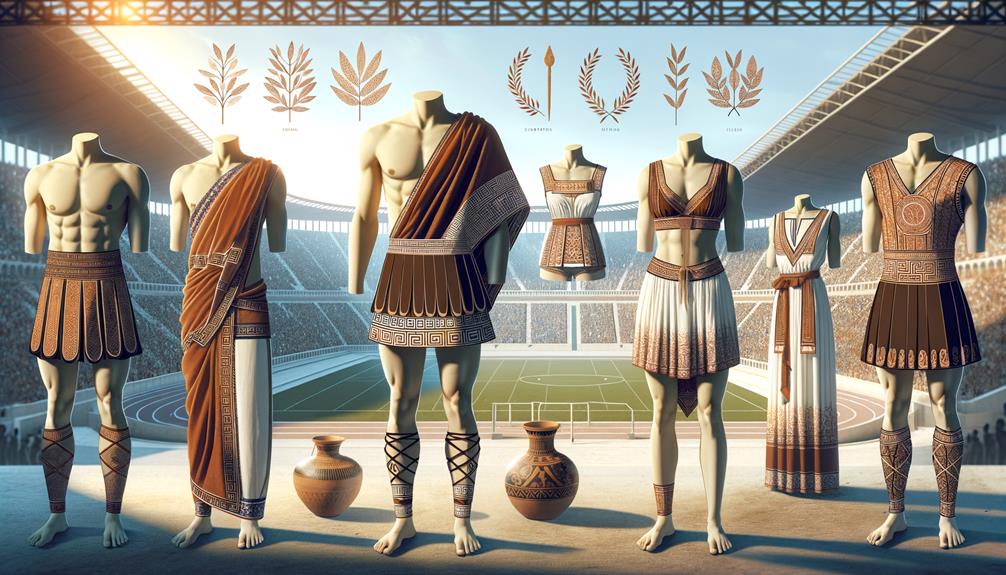
Shifting focus from the practical influences on modern sportswear, we find that ancient Greek athletic wear held significant cultural and symbolic meaning. In ancient Greece, athletes embodied the ideals of beauty, strength, and honor as they competed. Their minimalist attire, including chitons and himations, confirmed the importance of showcasing physical prowess without hindrance.
Ancient athletic wear was not just functional; it was also a means of expressing pride and identity. The intricate designs and vibrant colors of their garments conveyed a sense of individuality and communal pride. Each piece of clothing told a story, reflecting the athlete's dedication and the values of the society they represented.
In essence, ancient Greek athletic wear was a powerful symbol. It wasn't just about the competition; it was about embodying the highest ideals of Greek culture. This deep connection between attire and societal values demonstrates how the ancient Greeks celebrated and revered the human form and spirit. It's fascinating to see how these ancient traditions continue to influence contemporary athletic wear, blending functionality with a rich cultural heritage.
Frequently Asked Questions
What Do Ancient Greek Athletes Wear?
When I think about ancient Greek athletes, I picture them wearing minimal, functional clothing like linen chitons and himations, and competing barefoot. This attire reflects a culture that valued simplicity, physical excellence, and freedom of movement.
Did Ancient Greeks Have Athlete Uniforms?
Did ancient Greeks have athlete uniforms? Yes, they did, but they were surprisingly minimal. Male athletes wore loincloths, while females opted for short tunics. The focus was on freedom of movement and practicality.
What Did Greek Athletes Wear if They Were Victorious?
When I emerged victorious, I didn't wear a uniform, but instead, I was honored with an olive wreath. My triumph was immortalized through statues and poems, bringing recognition to both my family and hometown, symbolizing my dedication and achievement.
What Did Men Wear to Exercise in Ancient Greece?
In ancient Greece, exercising was a serious business. I'd wear a chiton or chlamys, but often trained naked, covered in olive oil to prevent chafing. Sandals and accessories like belts or fibulae helped keep my loose garments in place during workouts.



